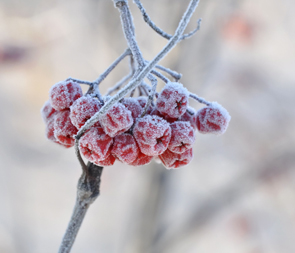 Frozen dumplings, noodles and meat semi-finished products, fruit and vegetables allow you to prepare a quick meal. In winter and spring, they supplement our diets with vitamins and minerals. Quickly frozen (under industrial conditions in freezers and cold stores at temperatures below minus 30 ° C) and properly stored products retain almost all nutritional values and almost unchanged taste and aroma Such freezing also inhibits the growth of microorganisms, while at a higher temperature (in the refrigerator freezer) it only slows down the decomposition process.
Frozen dumplings, noodles and meat semi-finished products, fruit and vegetables allow you to prepare a quick meal. In winter and spring, they supplement our diets with vitamins and minerals. Quickly frozen (under industrial conditions in freezers and cold stores at temperatures below minus 30 ° C) and properly stored products retain almost all nutritional values and almost unchanged taste and aroma Such freezing also inhibits the growth of microorganisms, while at a higher temperature (in the refrigerator freezer) it only slows down the decomposition process.
Freezing in the freezer compartment of a home refrigerator is therefore not basic. Food preserved in this way is not wholesome and keeping it for several months is even harmful, At home, you can only freeze in the freezer, strictly following the instructions. When buying frozen food, pay attention:
• czy opakowanie nie jest uszkodzone;
• czy barwa mrożonki nie jest zmieniona (vegetables and fruits should have an intense color);
• czy produkt wcześniej się nie rozmroził: it should move when you move, not be sticky;
• czas od momentu zakupu do umieszczenia w zamrażalniku nie powinien przekraczać 1 at.
Basic rules for preparing frozen foods for food:
• przed gotowaniem nie rozmrażać, throw into a small amount of boiling water and cook shorter than fresh products;
• warzywa do duszenia wsypywać na rozgrzany tłuszcz i dusić, covered, on reduced heat;
• niektóre mrożonki, e.g.. fishes, should be defrosted a little (especially if we coat them);
• przeczytać sposób przygotowania na opakowaniu, which will allow you to take full advantage of the products;
• warzywa na surówki bądź owoce przeznaczone do jedzenia na surowo rozmrażać w opakowaniu lub w przykrytym naczyniu (products do not oxidize and retain more nutritional value, e.g.. wit. C), do it slowly, preferably in the refrigerator at. +8° C, which reduces the leakage of juice and guarantees firmness.